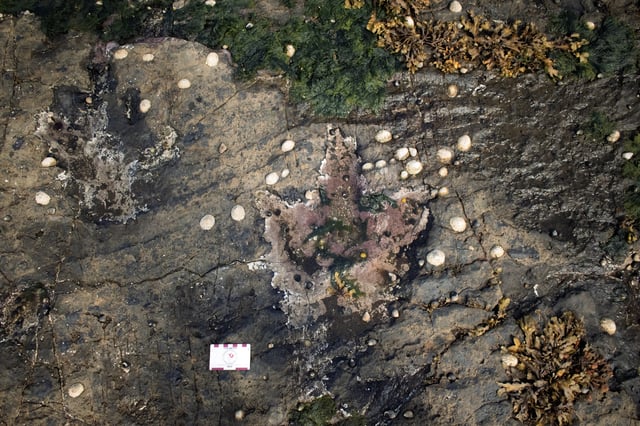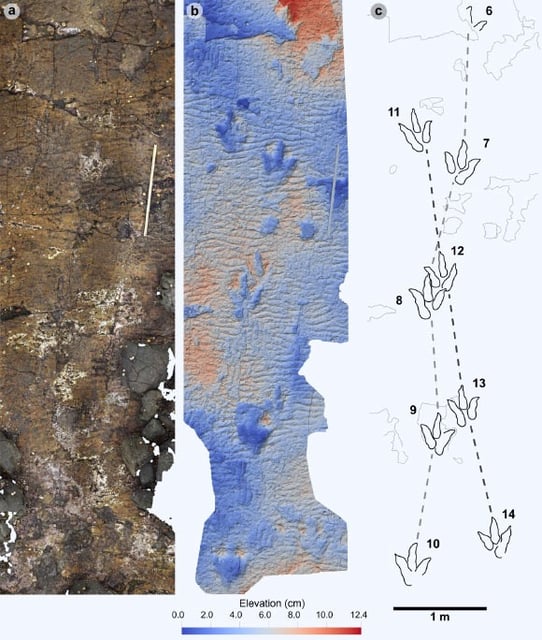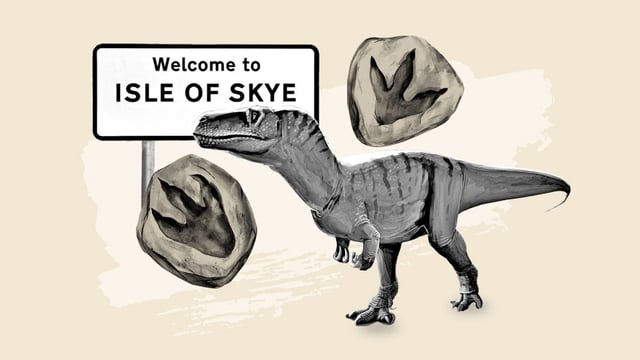Overview
- Scientists have identified 131 dinosaur footprints at Prince Charles’s Point on the Isle of Skye, dating back to the middle Jurassic period.
- The footprints, preserved in a subtropical lagoonal environment, provide a snapshot of dinosaur behavior and interactions, including coexistence at watering holes.
- The tracks include theropod footprints, likely from megalosaurs, and sauropod tracks from large plant-eating dinosaurs like Cetiosaurus.
- Advanced photogrammetry techniques, including drone imaging, were used to create 3D models of the tracks for detailed analysis.
- The discovery fills a gap in the fossil record and highlights the intersection of Scottish history and prehistory, as the site is also linked to Bonnie Prince Charlie’s escape in 1746.



